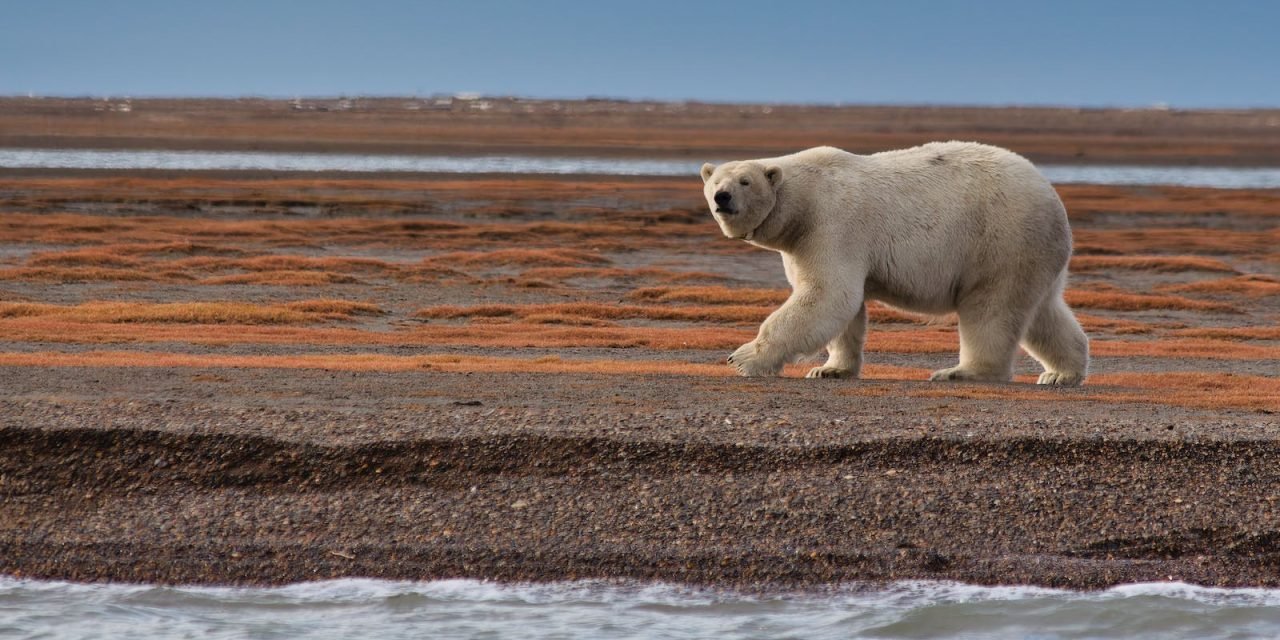In a new study, scientists have found a direct connection between human-generated greenhouse gas emissions and the survival rates of polar bears. This new research, published in the journal Science, sheds light on the perilous situation faced by these iconic Arctic creatures.
Polar bears, residing in 19 populations across the Arctic, encompass regions in Canada, the United States, Russia, Greenland, and Norway, all relying on sea ice as their hunting ground. Their primary prey, two species of seals, are accessible only through these ice sheets.
However, as climate change accelerates due to human activities, the Arctic is experiencing unprecedented ice melt. This phenomenon forces polar bears onto land, depriving them of their food source, and compelling them to subsist on their fat reserves.
The study, conducted by researchers from Polar Bears International, the University of Washington, and the University of Wyoming, has quantified a direct correlation between the number of ice-free days and the amount of planet-warming pollution released into the atmosphere. This correlation, in turn, affects polar bear survival rates in specific populations.
One alarming finding is that polar bears in the Chukchi Sea, an area within the Arctic Ocean, endured approximately 12 days without food in 1979. By 2020, this period had dramatically extended to roughly 137 days. Even more troubling is the revelation that for every 14 gigatons of greenhouse gas emissions released into the atmosphere, an additional day of fasting is added for these bears.
In regions where ice sheets typically remained during the summer, such as the South Beaufort Sea, the increase in fasting days was even more pronounced. This shift in their environment has led to a significant adjustment for these bears, as they now endure forced fasting days they did not experience before.
Furthermore, a previous study in 2020 had already established a link between the number of forced fasting days and declining reproduction and survival rates among polar bears. Combining this relationship with the new findings, researchers calculated the impact of cumulative emissions on polar bear survival rates.
This research provides compelling evidence of the impact of emissions on polar bear populations. It demonstrates that even seemingly small contributions from individual sources, such as power plants, collectively have a substantial effect. For example, each power plant in the US may make a relatively modest contribution, but together they emit nearly 2 gigatons of greenhouse gases annually. Over the lifespan of a polar bear in the southern Beaufort Sea (30-plus years), this would translate to over 60 gigatons of emissions, leading to a 4% reduction in their survival rate.
The study’s implications go beyond polar bears, as it sets a precedent for demonstrating the effects of climate change on ecosystems and other species. Kirsten Zickfeld, a climate science professor at Simon Fraser University, praised the research, stating that it allows scientists to directly connect carbon emissions to the survival of polar bear cubs and suggests that a similar approach could be applied to protect other species affected by climate change.
This groundbreaking study underscores the urgent need for concerted global efforts to mitigate greenhouse gas emissions and protect the fragile Arctic ecosystem, with polar bears serving as a crucial indicator of the wider consequences of climate change.










